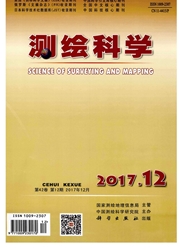

 中文摘要:
中文摘要:
本文以3个时期的TM/ETM+图像为数据源,反演了南过市1995-2008年的地表温度,利用均值-标准差法对城市热场进行了分级,阐述了南通市热岛效应空间分布格局、时空演变特征,定量分析了地表温度与土地利用、植被覆盖率的关系,揭示了南通市城市热岛效应演变的原因。结果表明,随着城市化进程的加快,南通市城市热岛区域扩张明显,增加了11.96%,且呈现逐渐向东南方向扩张的趋势,除以濠河为中心的老城区继续保留其热岛特征外,在新城区和经济开发区出现了多个热岛区域,植被覆盖率与温度高低存在着较高的负相关性。
 英文摘要:
英文摘要:
This paper took three periods of TM/ETM + images as the data sources to inverse surface temperature from 1995 to 2008 in Nantong. The mean-standard deviation method was used to grade the urban thermal field. This paper described the spatial patterns and the evolution characteristics of Nantong heat island. The relationship between the surface temperature and the land use was analyzed. What' s more, the cause of the heat island was revealed. It was shown that, with the accelerated process of the urbanization, the scope of the urban heat island in Nantong has increased 11.96% and showed the trend of gradually expanding to the southeast. In addition to the fact that Haohe River( the old urban center)retains its heat island characteristics, in the Development Zone and New Political Zone, there were several new heat island areas. There was a high negative correlation between the vegetation cover and the temperature.
 同期刊论文项目
同期刊论文项目
 同项目期刊论文
同项目期刊论文
 期刊信息
期刊信息
